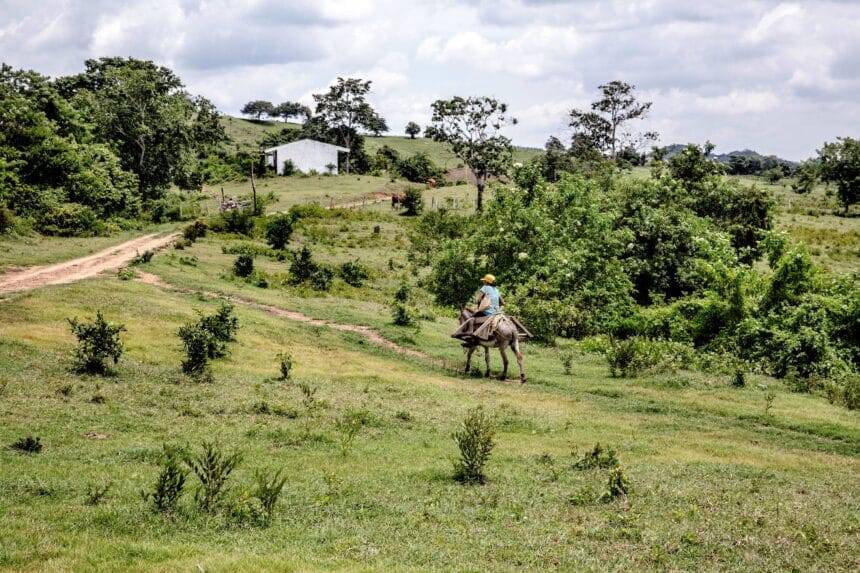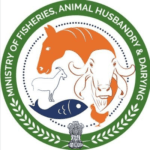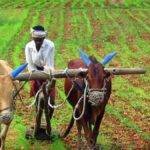Main Points In Hindi (मुख्य बातें – हिंदी में)
यहां दिए गए पाठ के मुख्य बिंदु निम्नलिखित हैं:
-
भूख और पोषण की चुनौती: वर्तमान में हर 11 में से एक व्यक्ति भूख का सामना कर रहा है, और 2030 तक 585 मिलियन लोग गंभीर रूप से अल्पपोषित होने का अनुमान है। जैव विविधता की कमी से हमारी खाद्य सुरक्षा जोखिम में है।
-
COP16 जैव विविधता सम्मेलन का महत्व: इस सम्मेलन का उद्देश्य सदस्यों को अपनी योजनाओं की ओर बढ़ाने में मदद करना है, जिसमें कृषि और खाद्य प्रणालियों के साथ जैव विविधता का स्थायी प्रबंधन सुनिश्चित करने की आवश्यकता पर जोर दिया गया है।
-
कृषि खाद्य प्रणालियों का योगदान: कृषि खाद्य क्षेत्र जैव विविधता लक्ष्यों से जुड़ा है, और यह पारिस्थितिकी तंत्र की बहाली, विदेशी प्रजातियों के प्रबंधन और मिट्टी के स्वास्थ्य के लिए आवश्यक है।
-
FAO की पहलकदमी: FAO ने जैव विविधता को मुख्यधारा में लाने के लिए रणनीतियां विकसित की हैं और कृषि खाद्य प्रणालियों में जैव विविधता-अनुकूल प्रथाओं को प्रोत्साहित करने के लिए विभिन्न कार्यक्रमों की योजना बनाई है।
- वैश्विक सहयोग और निवेश की आवश्यकता: जैव विविधता और जलवायु कार्यों को बढ़ावा देने के लिए प्रभावी वित्त का लक्ष्य रखा जाना चाहिए, जिसमें लगभग 1 ट्रिलियन डॉलर से अधिक का निवेश आवश्यक है। इसके साथ ही, कृषि खाद्य प्रणाली के परिवर्तन को न्यायसंगत और समावेशी बनाना ज़रूरी है।
Main Points In English(मुख्य बातें – अंग्रेज़ी में)
Here are the main points derived from the provided text:


-
Biodiversity and Food Security: There is a pressing need to bridge the gap between ambition and implementation in the conservation of biodiversity and food security. Currently, one in eleven people faces hunger, and by 2030, 585 million individuals may experience severe malnutrition, jeopardizing the capacity to sustainably feed the world.
-
COP16 Biodiversity Conference Focus: The upcoming COP16 conference will center on moving from pledges to actionable plans regarding biodiversity. It aims to ensure that biodiversity management is integrated into agricultural and food systems, recognizing agriculture’s vital role in sustainable biodiversity use.
-
Agricultural Solutions to Climate and Biodiversity Challenges: Agriculture is seen as essential in addressing significant challenges related to climate, biodiversity, and land management. The FAO stresses the need to prioritize agricultural solutions in multilateral environmental agreements and integrate them into national planning processes.
-
FAO’s Commitment and Initiatives: The FAO is actively involved in supporting countries through technical assistance for national biodiversity strategies and has set various initiatives, including the launch of financial tools and planning mechanisms to promote biodiversity-friendly agricultural practices.
- Importance of Inclusive Policies and Innovations: Transforming agricultural food systems requires equitable, inclusive, and gender-responsive policies that can effectively reach small farmers and producers. Innovations and technological advancements are crucial for maximizing the impact of biodiversity conservation efforts while fostering environmental sustainability.
Complete News In Hindi(पूरी खबर – हिंदी में)
कैली, कोलम्बिया – महत्वाकांक्षा और कार्यान्वयन के बीच अंतर को कम करना पृथ्वी पर जीवन और हमारे सहित जिन आवासों पर वे निर्भर हैं, उनमें पौधों और जानवरों की प्रजातियों की विशाल श्रृंखला को संरक्षित करने के संघर्ष में अगली सीमा है।
वर्तमान में, दुनिया में हर 11 में से एक व्यक्ति भूख का सामना कर रहा है, और अनुमान बताते हैं कि 2030 तक 585 मिलियन लोग गंभीर रूप से अल्पपोषित होंगे। जैव विविधता के बिना, हम दुनिया को स्थायी रूप से खिलाने की अपनी क्षमता को जोखिम में डालते हैं।
इस वर्ष में COP16 जैव विविधता सम्मेलनसंयुक्त राष्ट्र का खाद्य और कृषि संगठन (एफएओ) सदस्यों को प्रतिज्ञाओं से योजनाओं की ओर बढ़ने में मदद करने पर केंद्रित है। जबकि जैव विविधता लक्ष्य अक्सर विदेशी जानवरों, प्राचीन जंगल और प्रकृति संरक्षण क्षेत्रों से जुड़े होते हैं, वैश्विक सफलता की कुंजी न केवल रक्षा करके बल्कि कृषि और खाद्य प्रणालियों में जैव विविधता के स्थायी प्रबंधन को सुनिश्चित करके प्रकृति के साथ शांति सुनिश्चित करना है।
एफएओ के जलवायु परिवर्तन, जैव विविधता और पर्यावरण कार्यालय के निदेशक कावेह ज़ाहेदी कहते हैं, “जलवायु, जैव विविधता और भूमि प्रबंधन से संबंधित बड़ी चुनौतियों का सामना करने के लिए कृषि खाद्य प्रणाली समाधान बिल्कुल केंद्रीय हैं।” “उन्हें बहुपक्षीय पर्यावरण समझौतों में प्राथमिकता देने, गुणात्मक और मात्रात्मक दोनों शब्दों में अधिक संसाधन प्राप्त करने और राष्ट्रीय योजना प्रक्रियाओं और रणनीतियों में पूरी तरह से एकीकृत होने की आवश्यकता है।”
कुनमिंग, चीन और मॉन्ट्रियल, कनाडा में आयोजित पिछला COP15 एक महत्वपूर्ण क्षण था जब 196 देशों ने इस पर सहमति व्यक्त की थी। 2030 के लिए 23 लक्ष्य और 2050 के लिए चार व्यापक लक्ष्य. शायद एफएओ के लिए उतना ही महत्वपूर्ण, और निश्चित रूप से, यह तथ्य था कि वैश्विक नेताओं ने कृषि सहित जैव विविधता के सतत उपयोग की केंद्रीय भूमिका को पहचाना, नीति और कार्रवाई को केवल संरक्षण से परे आगे बढ़ाया।
ज़ाहेदी कहते हैं, “कैली वह क्षण है जहां इस विशाल महत्वाकांक्षा को ठोस योजनाओं में बदलना है, और हमें यह सुनिश्चित करने के लिए जोर देना होगा कि जैव विविधता को बढ़ावा देने के लिए कृषि के उपयोग पर जोर केंद्र स्तर पर रहे।”
कृषि खाद्य क्षेत्र – फसल और पशुधन उत्पादन, वानिकी, मत्स्य पालन और जलीय कृषि – किसी न किसी तरह से सभी लक्ष्यों से संबंधित हैं। कुनमिंग-मॉन्ट्रियल वैश्विक जैव विविधता ढांचा (जीबीएफ)। प्रकाशन कृषि खाद्य प्रणालियों के माध्यम से कुनमिंग-मॉन्ट्रियल वैश्विक जैव विविधता ढांचे पर काम करनाइस सप्ताह जारी किया गया, प्रत्येक जीबीएफ लक्ष्य और कृषि खाद्य प्रणालियों के बीच कुछ लिंक का वर्णन करता है। इसमें पारिस्थितिकी तंत्र की बहाली, आक्रामक विदेशी प्रजातियों और प्रदूषण से लेकर भोजन और कृषि, मिट्टी के स्वास्थ्य और परागण के लिए आनुवंशिक संसाधनों को संबोधित करने तक के लक्ष्य शामिल हैं।
जैव विविधता का संरक्षण और सतत उपयोग हमेशा एफएओ के अधिदेश के मूल में रहा है। जैव विविधता पर एफएओ का कार्य इसके द्वारा निर्देशित है कृषि क्षेत्रों में जैव विविधता को मुख्यधारा में लाने की रणनीति और कार्य योजना और लचीली कृषि खाद्य प्रणालियों के निर्माण पर ध्यान केंद्रित किया गया है जो खाद्य असुरक्षा और कुपोषण को उसके सभी रूपों में संबोधित कर सकती है।
एफएओ जीबीएफ के लगभग 25 शीर्षक, घटक और पूरक संकेतकों की निगरानी के लिए संरक्षक एजेंसी है।
COP16 में FAO की कुछ पहल
FAO COP16 शिखर सम्मेलन के दौरान कई कार्यक्रमों और प्रस्तुतियों में लगा हुआ है, जिसमें AFR100 के समर्थन में जर्मनी द्वारा वित्त पोषित परियोजना का शुभारंभ भी शामिल है, जिसका उद्देश्य 2030 तक अफ्रीका में 100 मिलियन हेक्टेयर खराब भूमि को बहाल करना है।
खाद्य और कृषि के लिए पादप आनुवंशिक संसाधनों पर अंतर्राष्ट्रीय संधि के कोलंबिया के अनुसमर्थन का जश्न मनाने वाला एक विशेष कार्यक्रम 22 अक्टूबर 2024 को कैली में आयोजित किया गया था। इस प्रकार कोलंबिया संधि का 153 वां अनुबंधित पक्ष बन गया।
30 अक्टूबर को पुनर्स्थापना दिवस, का हिस्सा पारिस्थितिकी तंत्र बहाली पर संयुक्त राष्ट्र का दशक एजेंडा, लक्ष्य 2 पर दिशानिर्देशों के लॉन्च की सुविधा होगी।
एफएओ सदस्यों को उनकी राष्ट्रीय जैव विविधता रणनीतियों और कार्य योजनाओं के साथ तकनीकी सहायता भी देता है, जिन्हें एनबीएसएपी के रूप में जाना जाता है। कृषि-खाद्य नीतियों और प्रथाओं का एकीकरण सुनिश्चित करना। संगठन अब तक 40 देशों की सहायता कर रहा है और कार्यान्वयन और निगरानी चरणों को कवर करने सहित उस समर्थन का विस्तार करने के लिए प्रतिबद्ध है।
30 अक्टूबर को, उच्च-स्तरीय सत्र के दौरान जब दुनिया भर के 100 से अधिक मंत्री चर्चा में हैं, एफएओ, जैविक विविधता पर कन्वेंशन के सचिवालय के साथ मिलकर, लॉन्च कर रहा है कृषि-एनबीएसएपी समर्थन पहल. यह पहल 15 देशों पर ध्यान केंद्रित करेगी और उन्हें उन्नत वित्तीय उपकरणों, योजनाओं और तंत्रों और नवीन नीति उपकरणों की पहचान करने में मदद करेगी जो कृषि खाद्य प्रणालियों में जैव विविधता-अनुकूल प्रथाओं को प्रोत्साहित करते हैं और जैव विविधता और सामाजिक-आर्थिक परिणामों पर उनके प्रभाव को मापते हैं, इस प्रकार जीबीएफ के कार्यान्वयन में तेजी लाते हैं। .
एफएओ कृषि खाद्य प्रणालियों में राष्ट्रीय स्तर पर निर्धारित योगदान कार्यों के जैव विविधता प्रभावों पर एक नया संक्षिप्त विवरण भी प्रकाशित करेगा, जो जांच करता है कि कृषि खाद्य प्रणालियों के माध्यम से जलवायु अनुकूलन और शमन लक्ष्यों को आगे बढ़ाने के लिए की गई कार्रवाइयां जैव विविधता को कैसे प्रभावित कर सकती हैं, और इन अत्यधिक के बीच तालमेल और सह-लाभों की पहचान कैसे करें कार्य के परस्पर जुड़े हुए क्षेत्र।
अन्य प्रकाशनों में पारिस्थितिकी तंत्र की बहाली, भूमि उपयोग योजना, वनों की सुरक्षा, संरक्षण और टिकाऊ प्रबंधन की भूमिका पर मार्गदर्शन और जानकारी शामिल है, और एक श्रृंखला जिसमें दिखाया गया है कि एफएओ निवेश संसाधनों तक पहुंचने के लिए वैश्विक पर्यावरण सुविधा के साथ कैसे काम करता है।
एफएओ के मुख्य संदेश
यह आवश्यक है कि कैली में एकत्रित हितधारक COP15 के समझौतों का लाभ उठाएं और अपनी जैव विविधता योजना और नीति ढांचे में कृषि खाद्य प्रणालियों को एकीकृत करने के अवसरों का लाभ उठाएं।
कृषि खाद्य प्रणाली समाधान जलवायु, जैव विविधता और भूमि समाधान हैं, जो आज लोगों और ग्रह के सामने आने वाली प्रमुख परस्पर जुड़ी चुनौतियों से निपटने का एक तरीका प्रदान करते हैं। उन्हें बहुपक्षीय पर्यावरण समझौतों में प्राथमिकता देने और राष्ट्रीय योजना प्रक्रियाओं और रणनीतियों में पूरी तरह से एकीकृत करने की आवश्यकता है। जैव विविधता और जलवायु कार्यों को बढ़ावा देने के लिए अधिक से अधिक प्रभावी वित्त, लगभग निश्चित रूप से $ 1 ट्रिलियन से अधिक की आवश्यकता होगी, और कृषि खाद्य प्रणाली परिवर्तन को लक्षित करना महत्वपूर्ण है।
साथ ही, सक्षम नीतियों, नवाचार और प्रौद्योगिकियों के माध्यम से कृषि खाद्य प्रणाली समाधानों को बढ़ाना, छोटे किसानों और उत्पादकों तक पहुंचने के लिए मौलिक है। अधिकतम प्रभाव के लिए कृषि खाद्य प्रणाली परिवर्तन न्यायसंगत, समावेशी और लिंग-उत्तरदायी होना चाहिए।
कृषि-खाद्य प्रणालियाँ भी जटिल हैं और ज़मीनी स्तर पर लाभकारी समाधानों की एक विस्तृत श्रृंखला पेश करती हैं। एफएओ के ज़ाहेदी मानव और पर्यावरण दोनों के लिए शक्तिशाली उपयोगिता के साथ आशाजनक परिणामों के उदाहरण के रूप में मिट्टी की बहाली की ओर इशारा करते हैं: दुनिया की ख़राब भूमि पर प्रभावी हस्तक्षेप – कुल का एक तिहाई – प्रजातियों की समृद्धि को बढ़ावा दे सकता है, कार्बन पृथक्करण को बढ़ा सकता है और फसल की पैदावार बढ़ा सकता है।
Complete News In English(पूरी खबर – अंग्रेज़ी में)
Cali, Colombia – Reducing the gap between ambition and implementation is crucial for preserving the vast array of plant and animal species that depend on Earth’s ecosystems, including our own. Currently, one in every 11 people worldwide faces hunger, and projections indicate that by 2030, 585 million people will be severely malnourished. Without biodiversity, our ability to sustainably feed the planet is at risk.
This year’s COP16 Biodiversity Conference, organized by the United Nations Food and Agriculture Organization (FAO), focuses on helping member countries transition from pledges to actionable plans. While biodiversity targets are often associated with wildlife, ancient forests, and conservation areas, the key to global success lies in sustainably managing biodiversity within agricultural and food systems for harmony with nature.


Kaveh Zahedi, Director of FAO’s Climate Change, Biodiversity, and Environment Office, states, “Solutions from agricultural food systems are central to facing significant challenges related to climate, biodiversity, and land management.” He emphasizes the need to prioritize these solutions in multilateral environmental agreements and to integrate them fully into national planning processes and strategies.
The previous COP15 event in Kunming, China, and Montreal, Canada, marked a significant moment where 196 countries agreed on 23 targets for 2030 and four overarching goals for 2050. Importantly, global leaders recognized the vital role of sustainable use of biodiversity in agriculture, moving policy and action beyond mere conservation. Zahedi notes, “Cali is the moment to transform this immense ambition into concrete plans, and we must advocate for agriculture’s role in promoting biodiversity to remain a focal point.”
Agricultural and food sectors—covering crop and livestock production, forestry, fishing, and aquaculture—connect to all these targets, as outlined in the Kunming-Montreal Global Biodiversity Framework (GBF). A recent publication, Working through Agricultural Food Systems on the Kunming-Montreal Global Biodiversity Framework, describes the links between each GBF target and agricultural food systems, covering topics like ecosystem restoration and genetic resources for food and agriculture.
The FAO has always prioritized biodiversity conservation and sustainable use. Its work is guided by a strategy to mainstream biodiversity in agricultural sectors and aims to build resilient agricultural food systems that tackle food insecurity and malnutrition in all forms.
FAO serves as the custodian agency for nearly 25 titles, components, and complementary indicators of the GBF.
FAO’s Initiatives at COP16
During the COP16 summit, the FAO is involved in various programs and presentations, including the launch of a Germany-funded project supporting AFR100, which aims to restore 100 million hectares of degraded land in Africa by 2030.
A special event celebrating Colombia’s ratification of the International Treaty on Plant Genetic Resources for Food and Agriculture took place on October 22, 2024, marking Colombia as the 153rd contracting party. The restoration day on October 30 is part of the United Nations Decade on Ecosystem Restoration, promoting guidelines for target 2.
FAO provides technical assistance to member countries in developing their National Biodiversity Strategies and Action Plans (NBSAPs), focusing on the integration of agricultural-food policies and practices. The organization currently supports 40 countries and is committed to expanding its assistance, including implementation and monitoring phases.
On October 30, during a high-level session involving over 100 ministers from around the world, the FAO will launch the Agriculture-NBSAP Support Initiative. This initiative will focus on 15 countries, helping them identify advanced financial instruments and innovative policy tools that encourage biodiversity-friendly practices in agricultural food systems while measuring their socio-economic impacts, thus accelerating GBF’s implementation.
FAO will also publish a brief overview of the biodiversity impacts of Nationally Determined Contributions (NDCs), exploring how actions taken to advance climate adaptation and mitigation goals through agricultural food systems can affect biodiversity and identify synergies and co-benefits across interconnected areas.
Other publications will provide guidance and information on ecosystem restoration, land use planning, forest conservation, and sustainable management, highlighting how FAO collaborates with the Global Environment Facility to access investment resources.
FAO’s Key Message
It is essential for stakeholders gathered in Cali to leverage the agreements made at COP15 and capitalize on opportunities to integrate agricultural food systems into their biodiversity plans and policy frameworks.
Solutions within agricultural food systems are central to tackling climate, biodiversity, and land-related challenges facing people and the planet today. They require prioritization in multilateral environmental agreements and complete integration into national planning processes and strategies. Encouragingly effective financing for biodiversity and climate actions will likely exceed $1 trillion, making it crucial to target transformation in agricultural food systems.
Moreover, enhancing agricultural food system solutions through empowering policies, innovations, and technologies is fundamental for reaching small farmers and producers. To maximize impact, the transformation of agricultural food systems must be equitable, inclusive, and gender-responsive.
Agricultural-food systems are complex and present a wide range of viable solutions at the grassroots level. Zahedi from FAO points to promising outcomes, such as soil restoration, which can effectively intervene in one-third of the world’s degraded land, promoting species richness, enhancing carbon sequestration, and increasing crop yields.
Source link








